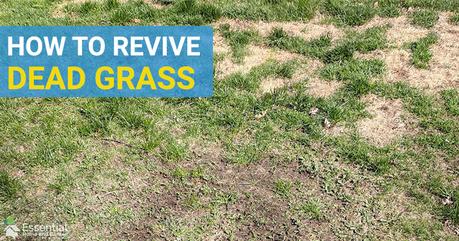
Whether you've had an intensely hot summer, left on vacation for a few weeks, or had a pet leave spots on your lawn, nobody likes to see yellowed or brown killed grass on their lawn. Your home's curb appeal can tell a story to guests and neighbors, so it's important to keep your lawn in high standing as much as possible.
It may even net you a homeowner's association fine if you're not up to the neighborhood's lawn standards. However, not everyone can afford to rip up and replace their grass anytime it loses its green sheen - nor is it necessary most of the time!
When exposed to extreme heat, extended cold, or minimal water over a period of time, grass begins to dry, recede, and eventually die if proper growing conditions aren't restored. This dormancy happens because the grass is trying to preserve itself with limited resources, so it focuses on maintaining the rooting rather than the surface grass. Fortunately, before total death there is a period of dormancy where your lawn is just waiting to come back to life with proper treatment.
If your lawn is starting to look post-apocalyptic, try these tips on how to fix dead grass.
How to Revive Dead Grass
While you may think your grass is a goner once it yellows or browns, it probably just needs some TLC and time to return to its lush beauty.
In many cases, what you think is dead grass is actually just dormant grass that can be restored through one of the following methods:
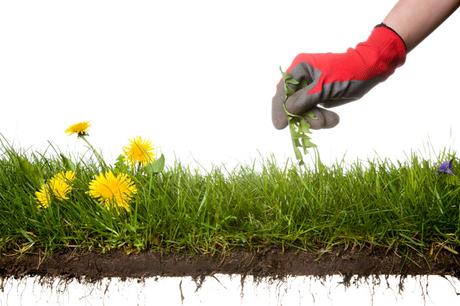
Water is the primary source of life for grass, but the same is true for weeds. When you have weeds growing alongside grass, they fight for available water in the roots & at the surface which means there is less water to keep your grass alive.
To free up the water available to your lawn, hand-pull weeds out by the root so that they stop stealing water from the grass you're trying to maintain. Be sure you get the roots so that they can't grow right back, though!

Even in some of the hottest conditions, grass can still grow as long as it is properly hydrated. This is because the heat doesn't kill the grass - the dehydration it causes does.
If your grass has gone dormant because of heat or dehydration, providing sufficient water should allow it to begin actively growing again, restoring its lush green color. Just be sure not to overwater it to compensate, because drowning your grass can be just as bad as dehydrating it.
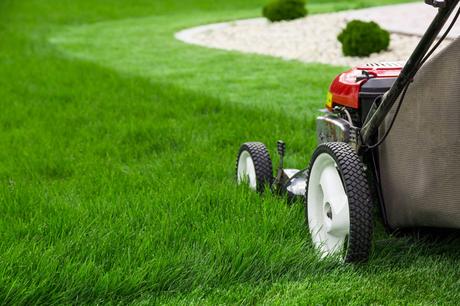
While cutting your grass seems like an odd way to help a dying lawn come back from dormancy & grow again, it's actually an effective way to naturally fertilize your lawn - as long as you leave the clippings behind!
Grass is rich in nitrogen, which is a major component of fertilizers that help grasses & plants grow. When you leave the clippings behind, they decompose and are absorbed into the soil, enriching it with the nitrogen which helps the existing grass grow greener & fuller.
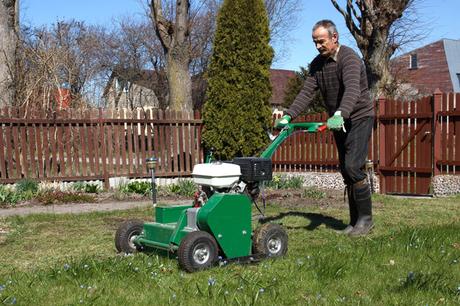
Your grass needs water, nutrients, and air to survive and thrive. While there's no shortage of air outside, sometimes it can't reach the roots of your grass. This happens due to soil compaction which is when the density of dirt, thatch, and grass is too thick for the air to penetrate. Without air, the grass cannot continue to grow and may find itself dormant.
Aerating your grass involves creating holes in the ground for the air (plus any topical fertilizers and water) to get where they need to at the roots of your grass. This can be done with an aerator or manually depending on the size of your lawn and - in combination with other treatments - can return your lawn to its former glory.
Top Dress It
Topdressing involves spreading a compost or other nutrient-dense soil on top of your lawn (similar to mulching). This can be to change the soil's composition or just provide a nutrient boost. The existing lawn absorbs the nutrients naturally through decomposition, with the help of watering, or through aeration holes to help the grass grow fuller & thicker. You can also top dress with sands or other mixtures to improve water flow, increase grass density, and more.
You can spread the topdressing manually over the entire yard (or hire a landscaper to do it), then simply watering the lawn after should be enough for it to be absorbed.
Fertilize It
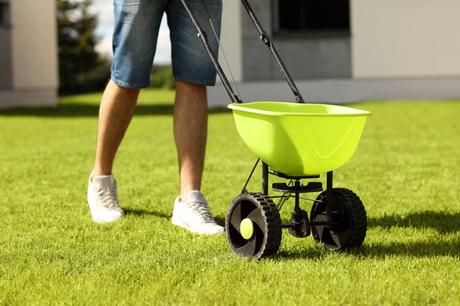
Just like we take supplements for our health, your lawn can be supplemented with the nutrients that fertilizers provide to encourage it to grow correctly. Your lawn needs a consistent supply of nitrogen, phosphorous, and potassium in order to grow freely.
Depending on the composition of your lawn's soil, it can be deficient in one or all of these nutrients which causes dormancy. To remedy this, you need to supplement the soil with fertilizer that contains the missing pieces.
While you can fertilize naturally with lawn clippings or compost, you can also use chemical fertilizers that provide a higher concentration of the nutrients - though they can be dangerous to consume for pets and children in larger quantities.
These chemicals can be spread with a Fertilizer Spreader throughout the lawn for easy application, but be sure to water afterwards so that the fertilizer doesn't blow away with the wind. It needs to reach the soil to provide the benefits!
Is Your Grass Dead or Dormant?
Determining whether your grass is actually dead or just dormant is important because it dictates what your next steps should be. If it salvageable, you can save time, money, and a lot of work by restoring it rather than starting all over. If not, no harm no foul.
Try these tests to see if you have a dead lawn or a dormant lawn.
If you've ever picked out your own Christmas tree, you probably performed a "tug test" to tell whether they were fresh or older. The same applies to grass, where dead blades will pull out easily because they have lost their rooting while dormant grass holds on, taking an effort to uproot them.
In many cases, if your grass is dormant it'll be uniform across your entire lawn because the problem likely is due to temperature or water problems. However, if you have patchy spots of dormant/dead grass spread throughout the yard, it's possible that they were caused by another problem like bugs, chemicals, pets, or other outside factors.
The exception is grass that is dehydrated due to irrigation problems that are limiting the water in a specific area. Always check that it is properly hydrated first.
Response to Watering
With so many lawns going dormant due to dehydration from drier climates, watering your lawn is probably one of the most obvious but most effective ways to test the grass.
If the grass is sleeping, the introduction of the water will allow it to wake up and continue growing again, leading to green returning within the next few days. However, if you provide water and it still shows no sign of recovery, it is likely dead.
What To Do If Your Lawn is Actually Dead
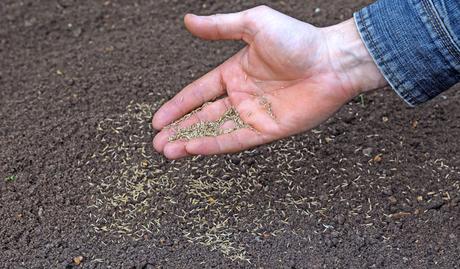
If your tests come up empty and you're left with a dead lawn, you're going to have to work to get it back in shape. Dead grass can't come back the same way dormant grass can - you'll need to start over.
Patches of dead grass are much easier to fix than full lawns that need replacing, as you'll be able to perform patchwork that integrates the new grass in with the older grass. However, the process is very similar for both - the scale of the work just goes up immensely.
You can begin a new lawn by raking the dead grass (and any turf that comes with it) up so that you're left with just the soil.
After loosening it to allow for better breathability and penetration, spread seed (and compost if needed) so that they land firmly in the soil you tilled.
Once you've planted the seed, apply natural or chemical fertilizer to get it off on the right foot, and water & mulch it with healthy grass clippings or leaves for additional nutrients.
Once you set the base of your new lawn, simply maintain it with proper sunlight & water so that it can grow. It may be a bit uneven to start, but give it a few weeks before you add another layer to less full patches.
Got questions? We have answers! If you don't see your question below, leave us a comment and we'll help you out ASAP.
How Much Should I Water My Lawn to Avoid Dormant Grass?
Watering your lawn isn't a precise science, but it is important that you don't provide far too much or far too little. Underwatering leads to dormant grass and overwatering can drown the lawn, doing more harm than good by limiting oxygen availability in the soil.
You should aim to water your lawn every other day early in the morning or at dinnertime. The morning is often cooler, which allows the water to be absorbed before it evaporates in the sun. Watering in the early evening means it'll still get some sunlight but still lets your grass dry before it is completely dark.
In terms of quantity, your lawn should receive about an inch of water per week from rain or manual watering. You can test your lawn's moisture by sticking a screwdriver or other tool into the soil, and if it is wet 6-8 inches down, it is properly hydrated.
Why Do I Have Patches of Yellow Grass?
Patches of dying or dormant grass alongside an otherwise healthy lawn mean that there is a problem other than weather conditions that is restricting its growth. In some cases, a sprinkler head could be broken which isn't allowing the area to be properly watered. It could also be infected with bugs that are damaging the soil and grass, which will need to be treated. Finally, it could be a result of over fertilizing a specific area or using weed killer too liberally, causing it to harm the grass as well.
Is It Safe to Use Chemical Fertilizers?
Many chemical fertilizers are safe to use on your lawn, permitting children and animals are kept away from it before it is absorbed.
The wind can blow the fertilizer and if it is ingested in large quantities, it can be toxic. Fortunately, once it is absorbed into the soil naturally or with the help of watering, it should be entirely safe to walk or play on. Just don't over fertilize or you may end up doing more harm than good!
Sources:
Dead grass image
.
